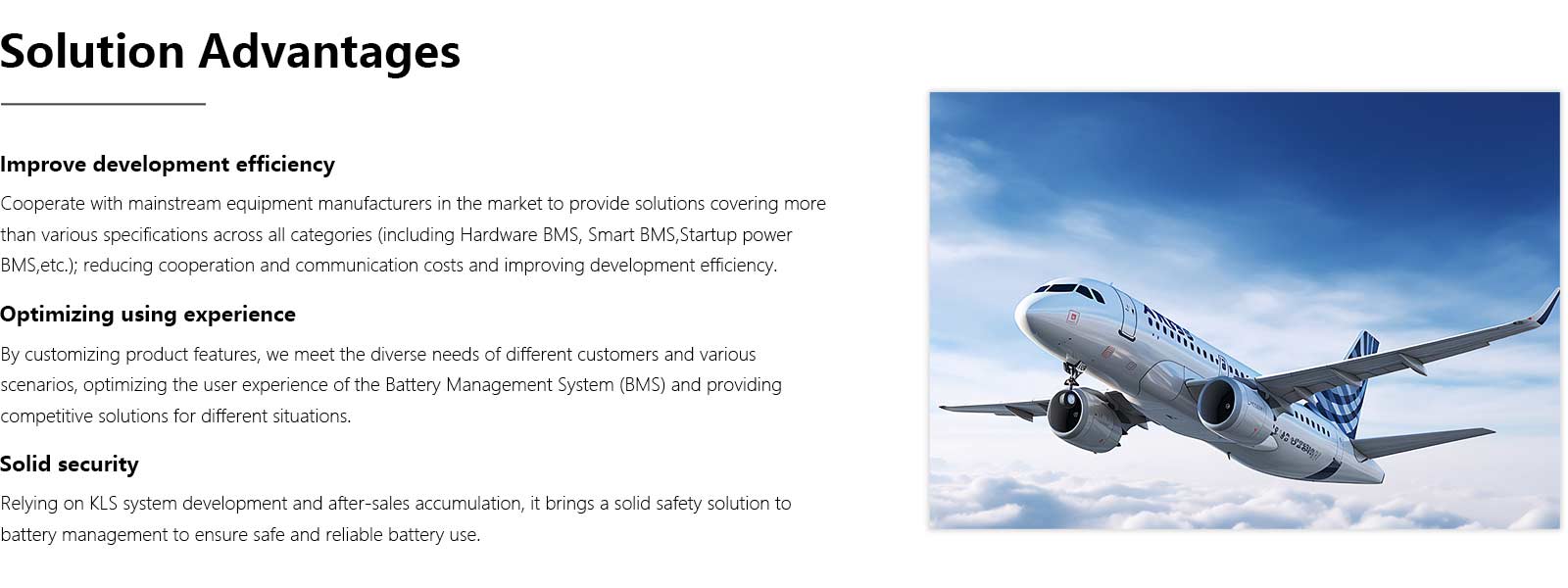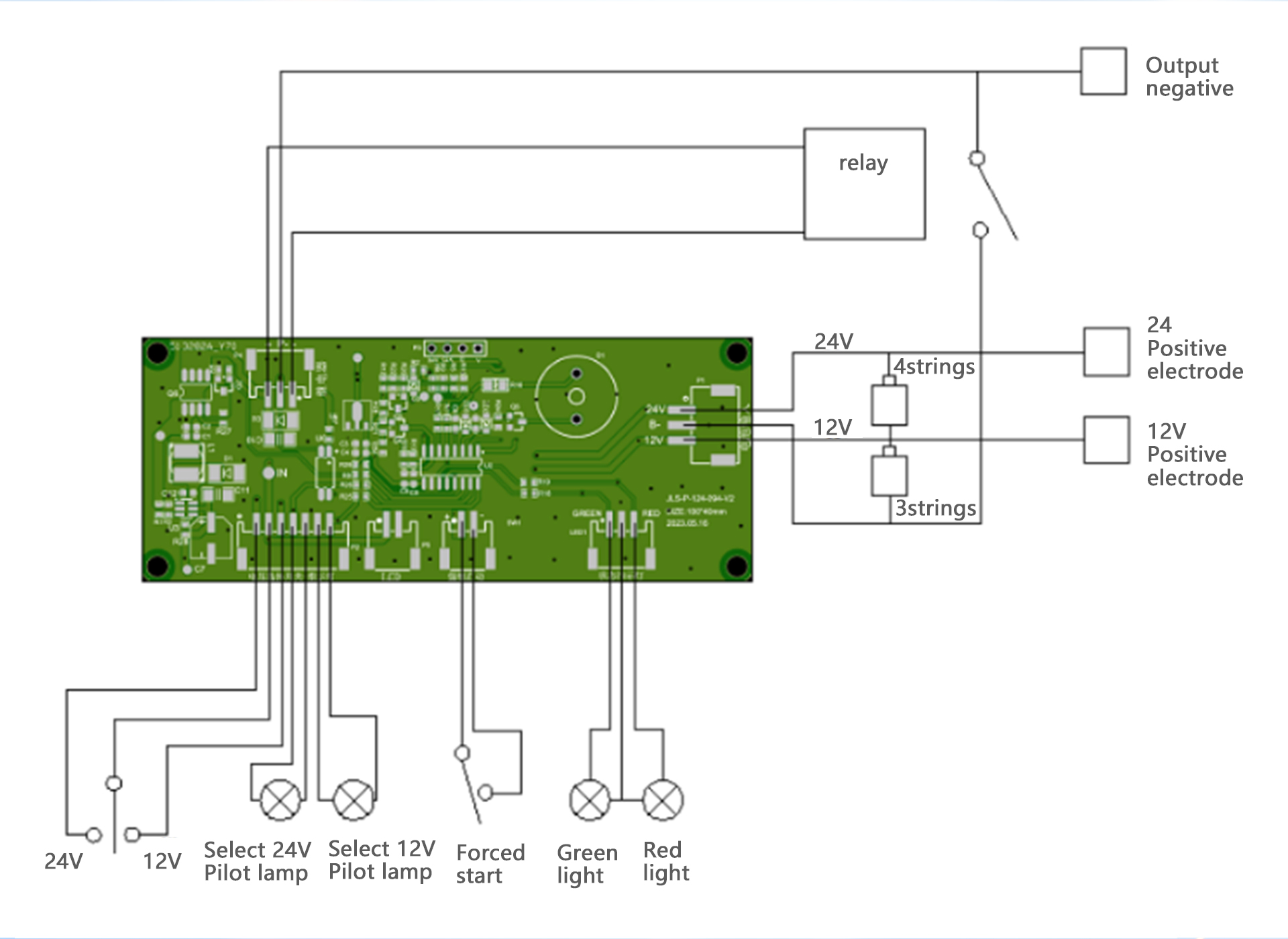
BMS Used In Portable Devices
Introdution To BMS In Portable Devices
Since the advent of portable gadgets such as laptops, cellphones, drones, And even medical equipment, modern life has witnessed a significant transformation. Technology mobility and accessibility have now become essential elements of innovation. One of the most vital aspects regarding the utility and convenience of these devices lies in their energy – efficiency. Consequently, battery management systems (BMSs) have evolved into an indispensable part of the design of portable devices as they control and safeguard the energy storage unit, Which is typically a rechargeable lithium – ion or lithium – polymer battery. A BMS undertakes several crucial functions in portable devices. Essentially, It monitors the voltage, current, And temperature of the battery. This ensures safe operation within predefined limits, Protecting against scenarios like overcharging, Overdischarging, Overheating, And short circuits that could potentially damage the battery or pose safety risks. Apart from these fundamental tasks, The BMS is of utmost importance for optimizing battery performance and longevity. It manages the charging and discharging processes of the battery, Often employing intricate algorithms to determine and maintain the battery’s optimal state of charge (SOC) and state of health (SoH). Power management is another key function of the BMS in portable devices. To conserve energy and prolong battery life, The BMS must dynamically adjust the power supply based on the device’s power requirements. For instance, In the case of laptops or smartphones, the BMS also enables fast charging by carefully balancing the charging speed and battery health. Moreover, Contemporary BMSs in portable devices usually notify users of crucial information, such as estimations of remaining battery life, suggestions on the best charging practices, Or even alerts regarding any issues that could impact the battery’s longevity or performance. Implementing BMS in portable devices comes with specific challenges. Since portable devices are usually limited in weight and space, The BMS must be compact, lightweight, And highly integrated. Additionally, These devices are often exposed to various operating environments, Including fluctuating temperatures and physical shocks. Hence, durability and reliability are indispensable. To ensure optimal energy management and extend battery life, The BMS must also continuously adapt as the devices’ functionality becomes more complex and power – demanding. BMSs balance multiple factors to maximize energy efficiency, safety, and device performance. Therefore, Their role in portable devices is both crucial and intricate. Future development and evolution of portable devices must take these requirements and constraints into consideration.
Laptops
BMS Requirements and Challenges
The high – power consumption of numerous internal components, Coupled with the need for mobility and extended usage durations, renders the role of a battery management system (BMS) in laptops extremely significant. Laptop battery management systems (BMS) are in charge of controlling multiple power states, Such as standby, hibernation, And active use, Each having specific power requirements and battery – saving strategies. For example, during active use, The BMS must keep the battery within safe operating parameters while simultaneously managing the power supply to various components, Including the CPU, GPU, And peripherals. On the other hand, In standby or hibernation modes, The BMS needs to reduce energy consumption to enhance the device’s “off – grid” availability. Managing the heat generated during laptop operation poses another challenge, As both the battery and its internal components can generate a significant amount of heat. The BMS must accurately monitor the battery’s temperature to prevent thermal runaway, Which can lead to irreversible damage or even safety hazards. Due to the small form factor of laptops, Which offers limited space for large battery packs or complex BMS equipment, The design of a laptop BMS also requires balancing power management with physical limitations. Additionally, the BMS must be efficient enough to minimize power consumption and extend battery life.
Case Study: Apple MacBook BMS
The MacBook series by Apple serves as an excellent example of how BMS is implemented in laptops. The BMS of the MacBook, commonly known as the System Management Controller (SMC), Is a subsystem that oversees numerous power – related operations, Such as managing battery charging and discharging. Apple has consistently been at the forefront of BMS design innovation, employing cutting – edge techniques to maximize battery lifespan. For example, the SMC utilizes adaptive charging, Which reduces stress and enhances battery longevity by decelerating the charging process when the battery approaches full capacity. In addition, to further prolong battery life, The latest MacBook models from Apple feature an additional function called “Optimized Battery Charging” that learns the user’s daily charging routine and delays charging beyond 80% until it is necessary. When it comes to providing users with comprehensive details regarding the condition and health of the battery, Including remaining capacity, Cycle count, and the overall battery health status, The MacBook BMS stands out. Thanks to this transparency, Users can better understand the energy autonomy of their device and make informed decisions about how frequently to charge and use their batteries.
Achievements and Limitations
The Battery Management System (BMS) of the MacBook has achieved remarkable progress in improving battery longevity and performance. By monitoring charging cycles, Maintaining optimal power states, And providing users with comprehensive information, The MacBook BMS ensures outstanding energy autonomy and durability. Nevertheless, like every system, There are limitations. One drawback of the BMS’s complexity is that issues may arise from software bugs or malfunctions due to its reliance on software. At times, SMC problems have led to irregular power behavior and incorrect battery readings. To resolve these problems, The SMC often needs to be reset. Another problem lies in the sealed design of modern MacBooks. Unlike older models, Modern MacBooks do not have user – replaceable batteries. As a result, for any hardware – related issues involving the battery or BMS, A visit to an authorized service provider is required.
Drones
BMS Requirements and Challenges
Drones, Also known as Unmanned Aerial Vehicles (UAVs), Rely heavily on Battery Management Systems (BMS) for their proper functioning and security. A drone’s BMS ensures the uniform drainage of the battery, Maintains the drone at a safe temperature, And communicates with the drone’s control system to provide accurate information regarding flight duration, Battery life, and the overall health of the battery. Minimizing weight is a critical requirement for the BMS in drones. For optimal flight performance, Drones need to be lightweight, meaning that all components, Including the BMS, should be as light as possible. This constraint often requires the BMS to utilize specialized, Miniaturized hardware. Secondly, A drone BMS needs to guarantee precise real – time predictions of the state – of – charge (SOC) and state – of – health (SOH). With this data, The drone’s control system can calculate the remaining flight time and land the drone safely before the battery is depleted. Drones face challenges because they are frequently used in diverse environmental conditions. Therefore, The BMS must be designed to withstand potential thermal issues caused by intense sunlight, Extreme ambient temperatures, Or sudden changes in altitude. Another difficulty stems from the high rates of charging and discharging required for drone operation. These high rates can over – stress the battery, Potentially reducing its lifespan and creating safety risks. The BMS must address these issues while ensuring that the drone has sufficient power for stable flight.
Real-World Implementation and Outcomes
When considering BMS implementation, KLS’s drones are among the most popular consumer drones globally. The advanced BMS employed in KLS’s intelligent flight batteries tracks and reports crucial indicators such as voltage, Current, temperature, And the health of battery cells. Through communication with the drone’s controller, The BMS provides real – time telemetry data about the battery’s condition. Moreover, KLS’s BMS features state – of – the – art safety functions like low – voltage alarms, Which notify the user when the battery level is critically low, As well as overcharge and overdischarge prevention. A remarkable outcome of KLS’s BMS implementation is the “return – to – home” feature. This feature is activated when the drone loses signal or when its battery level is low enough, enabling the drone to return to its launch point with just sufficient energy remaining. Undoubtedly, This function has prevented numerous drones from being lost or damaged due to battery depletion. KLS’s implementation serves as a reminder of how vital a robust BMS is for maintaining safe and efficient drone operations. Despite the inherent challenges, The integration of modern BMS significantly enhances drone flight time, Safety, And user experience.
Medical Devices
BMS Requirements and Challenges
When it comes to portable medical devices, Such as heart monitors, Infusion pumps, And ventilators, The Battery Management System (BMS) assumes even greater significance. Besides ensuring optimal battery performance and longevity, It has a substantial impact on patient safety and the overall effectiveness of medical treatment. This implies that a BMS must meet extremely stringent requirements and adhere to very strict standards. Reliability, Accuracy, And safety are the primary demands placed on a BMS for medical equipment. The ability to accurately estimate the remaining battery life, Commonly referred to as the state – of – charge (SOC), Is of crucial importance because these devices often need to operate continuously for extended periods. A low battery can lead to a malfunction of the medical device, With potentially fatal consequences. In addition to managing potential issues related to overcharging, Overdischarging, Or overheating, The BMS must also ensure the safety of the battery. Furthermore, These systems must comply with medical safety certifications and standards like IEC 60601 and ISO 13485. There are numerous obstacles in the design and implementation of BMS in medical devices. Design constraints are challenging and encompass the need for longer battery life cycles, High reliability and precision, A wide range of working environments, And component miniaturization.

Case Study: BMS in Portable Medical Ventilators
The BMS regularly monitors and adjusts the battery settings to maintain optimal performance and extend battery life by preventing deep draining and overcharging. Moreover, Real – time battery status data is communicated between the ventilator system and the BMS, enabling the device to alert healthcare providers when the battery is running low. This functionality is crucial for maintaining patient care during power outages or when a patient needs to be transported or relocated.
Achievements and Limitations
The utilization of sophisticated Battery Management Systems (BMS) in portable medical devices has enabled significant progress. They have contributed to enhanced patient safety, Reliable performance, And extended operation times of the devices. The BMS of the PB560 ventilator has demonstrated that effective battery management is crucial during emergencies and power outages. However, These systems do have certain limitations. Due to the complexity of medical device applications, A high level of customization in BMS solutions is often required. This can increase costs and complicate the manufacturing process of the devices. Although BMS has achieved great progress in ensuring device reliability, There is still room for improvement, particularly in enhancing the total energy density of medical batteries and the precision of State – of – Charge (SOC) prediction. Despite these obstacles, The advancements in BMS technology are continuously transforming the field of portable medical devices. They enable the devices to be more durable and reliable and to operate securely in various environments, Ultimately improving patient outcomes.
Add Your Heading Text Here
Common Trends Several prevalent patterns within Battery Management Systems (BMSs) can be identified across a wide array of portable devices, Such as drones, Laptops, And medical equipment. Safety and Reliability Enhancements: With the extensive use of lithium – ion batteries, the BMS now highly emphasizes these two aspects. In the electronics domain, Advanced algorithms for fault diagnosis, Overcharging and overdischarging protection, As well as state – of – charge and state – of – health estimations are becoming standard. Miniaturization: As portable devices continue to shrink in size, BMS components are also becoming smaller while retaining more functions. This trend has been made possible by improvements in Integrated Circuit (IC) technologies and the development of multi – function BMS chips. Connectivity and Interoperability: As portable devices are becoming more interconnected, BMSs are evolving to incorporate diverse connectivity features. Currently, a key requirement is the device’s ability to transmit critical information, Like battery status, To a network or the main controller. Adaptive Operation: Modern Battery Management Systems (BMSs) are designed to adapt their operations based on variable factors such as temperature, Battery age, and load demand. This adaptability improves battery life and performance.


